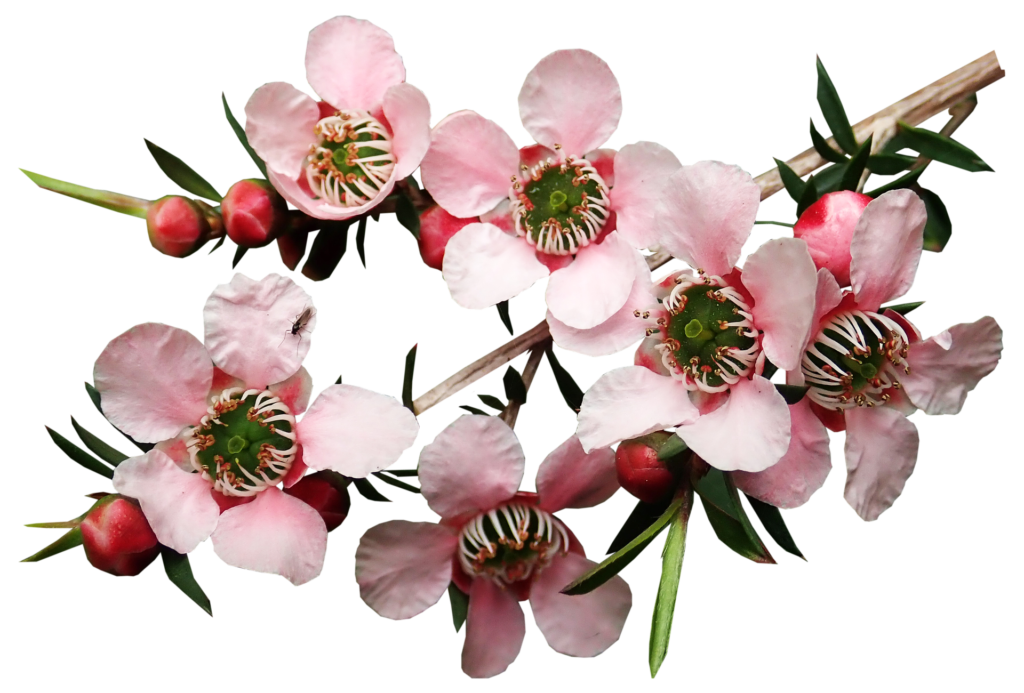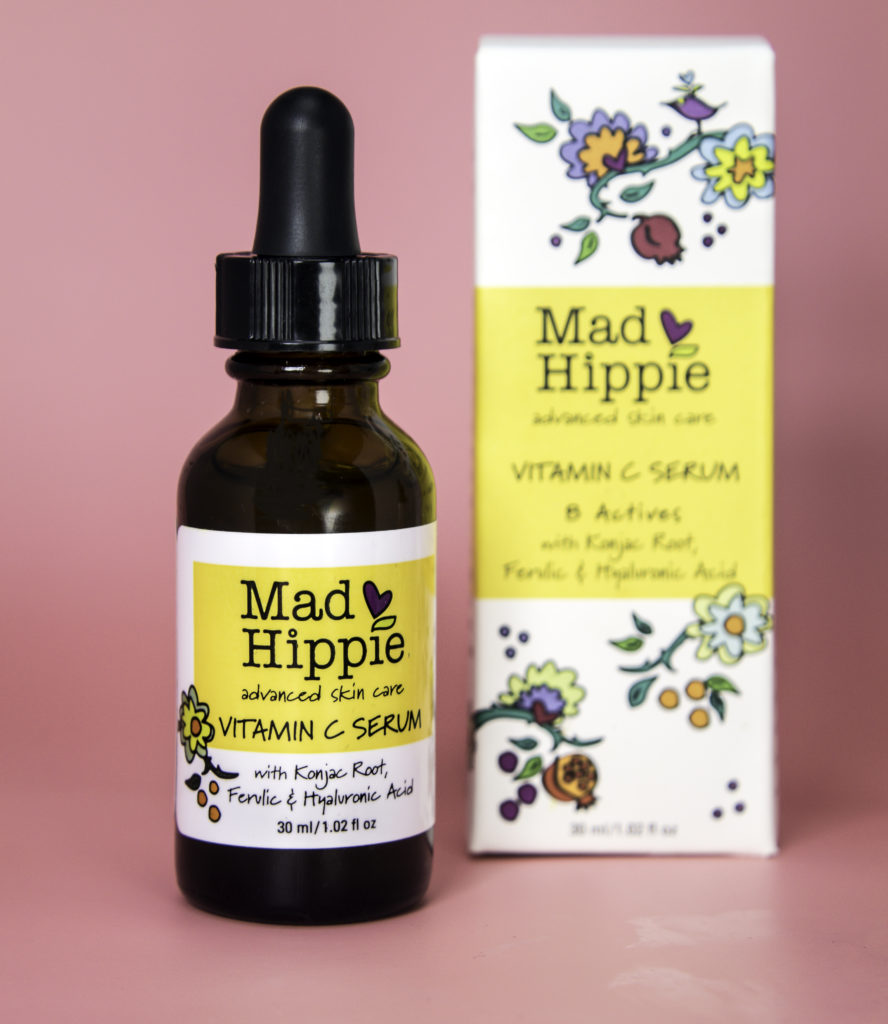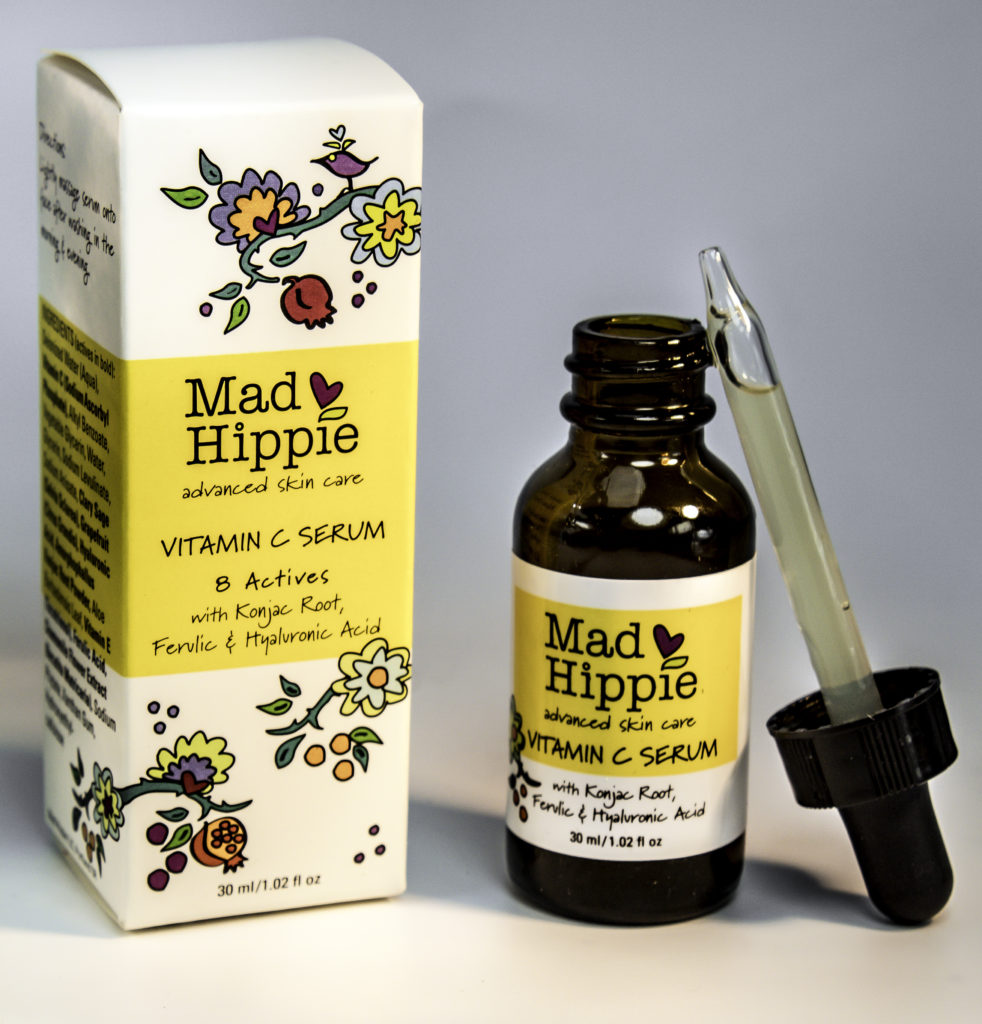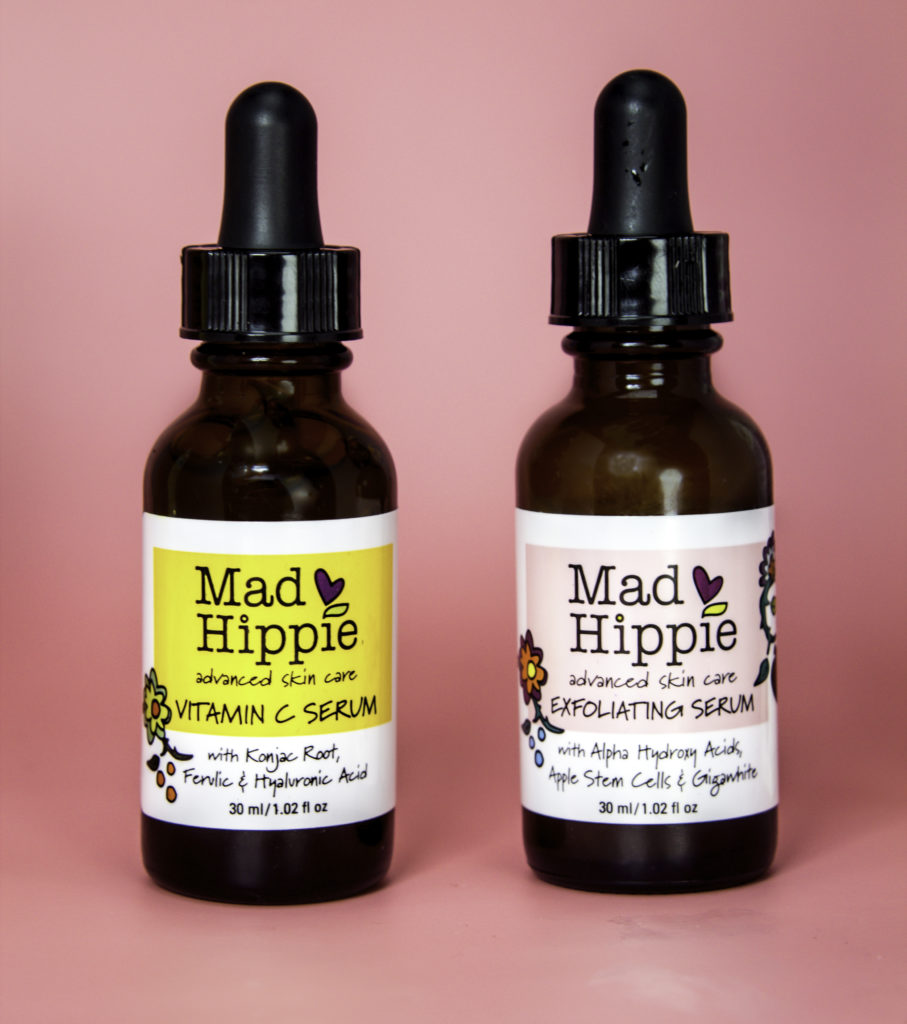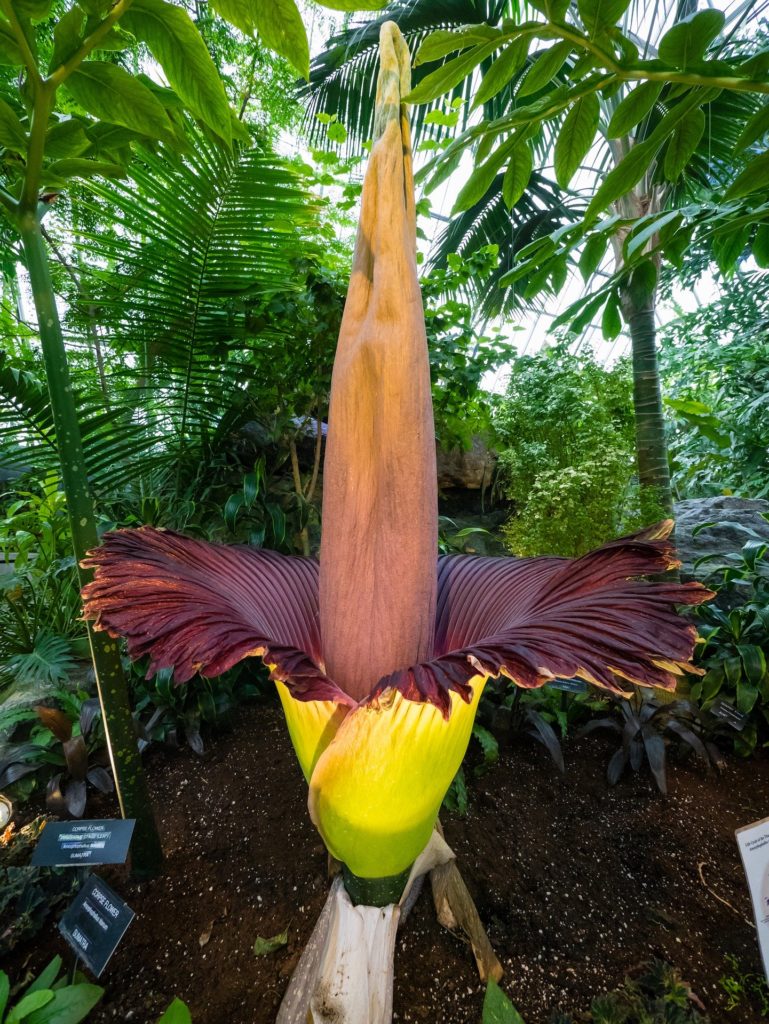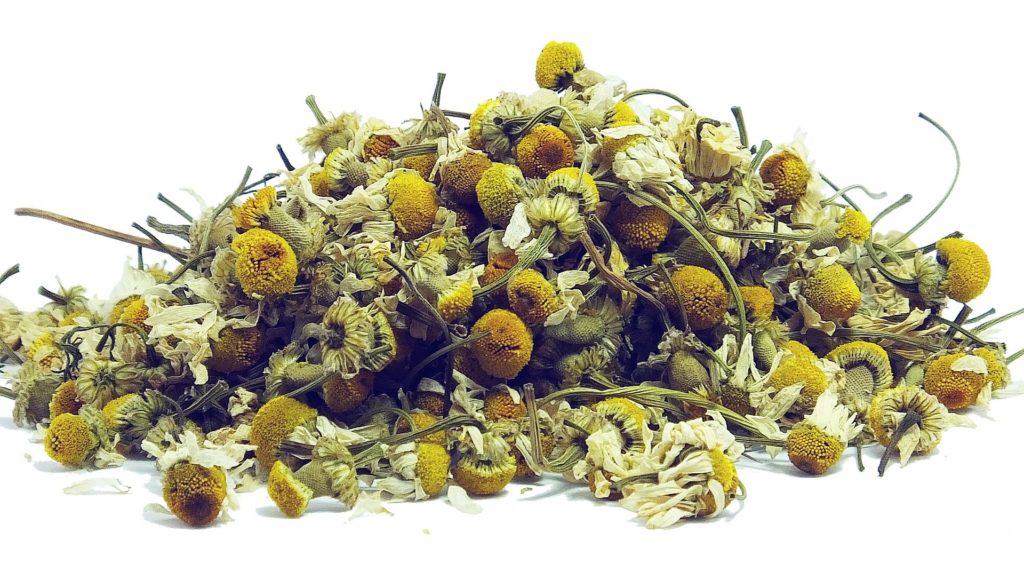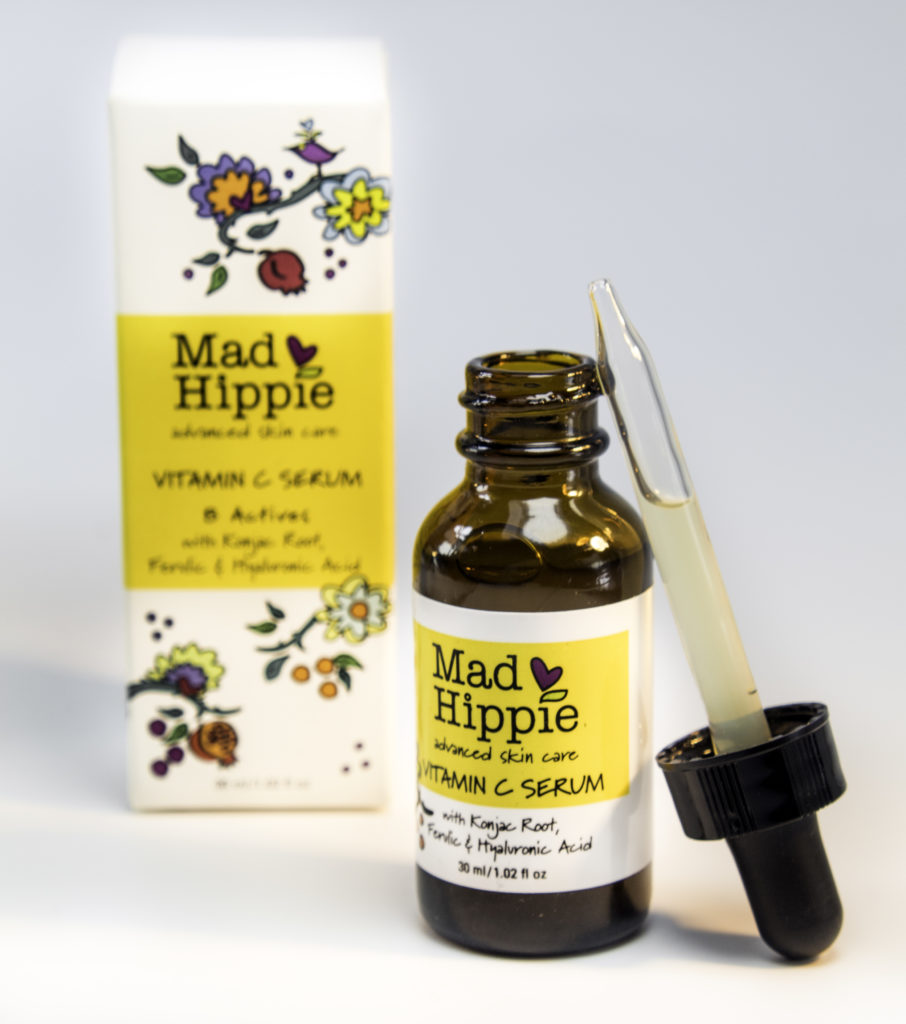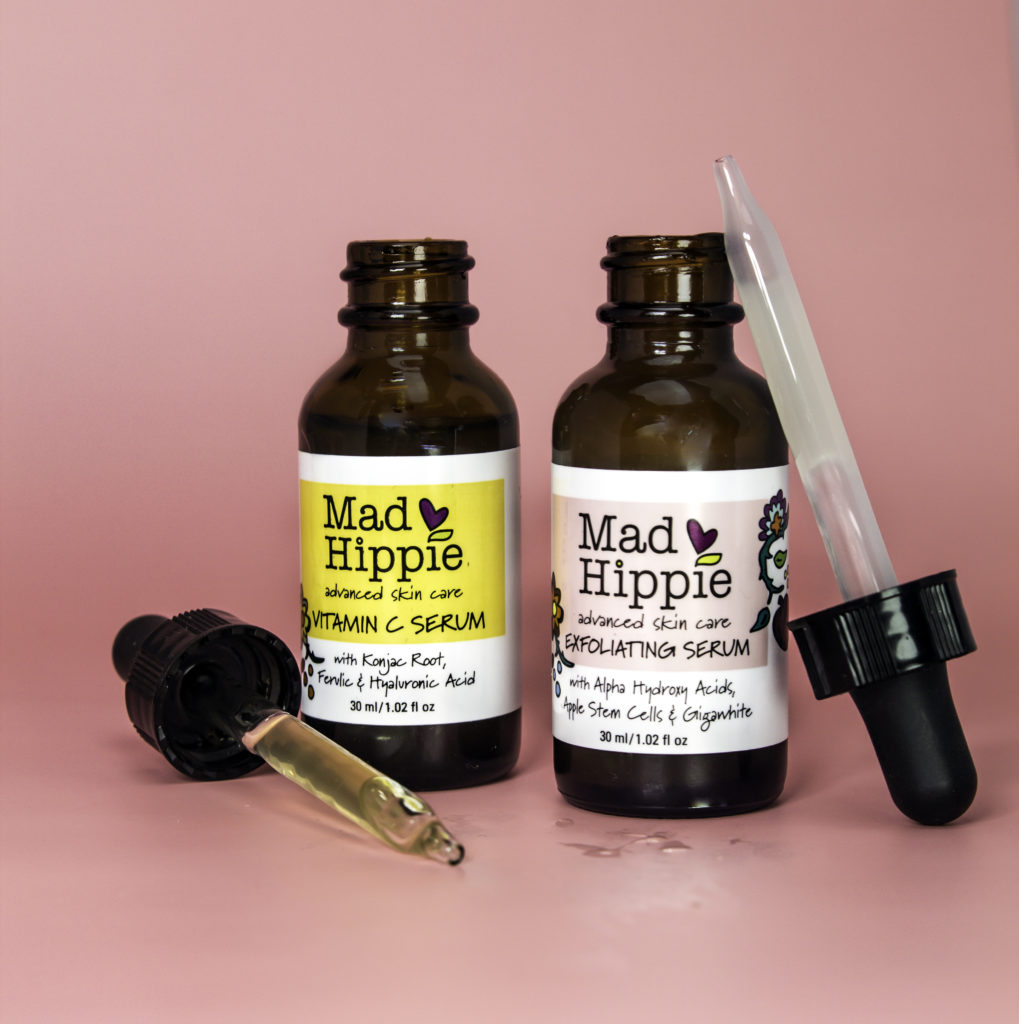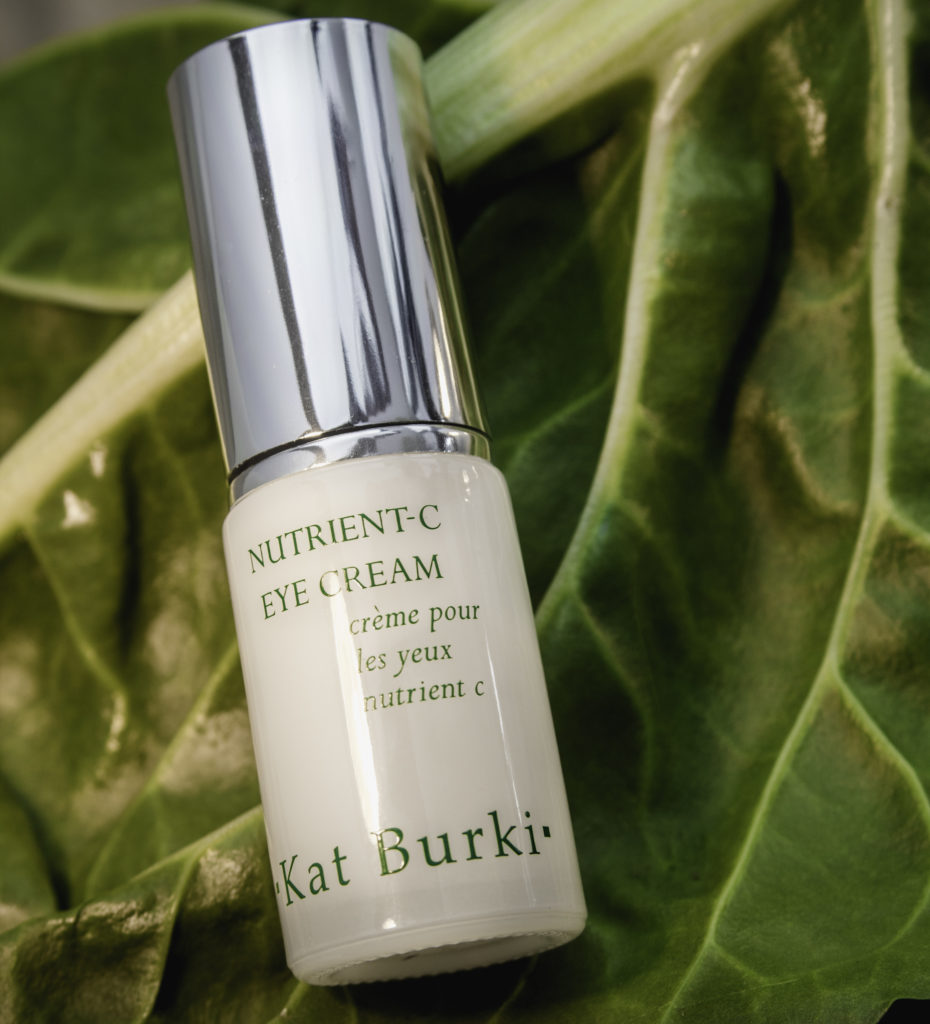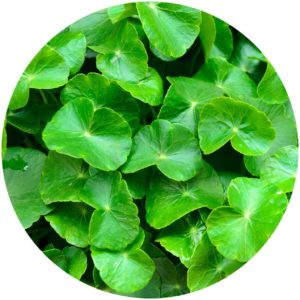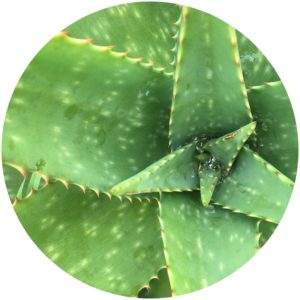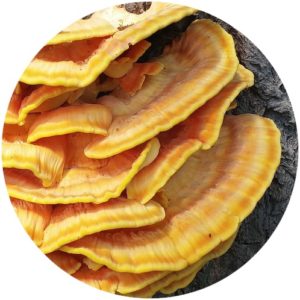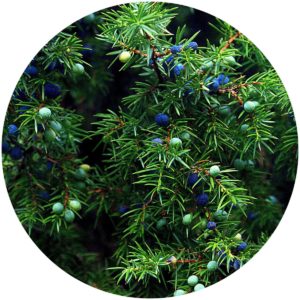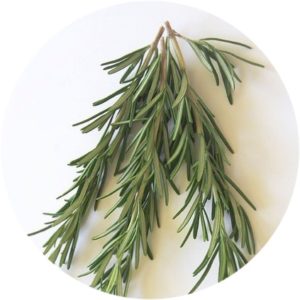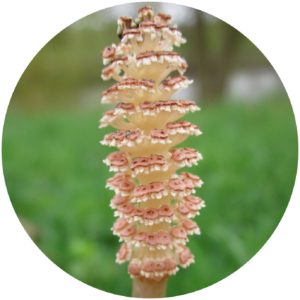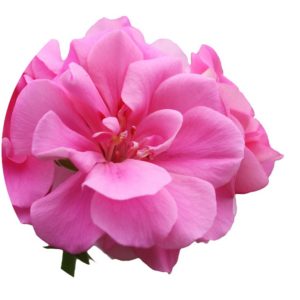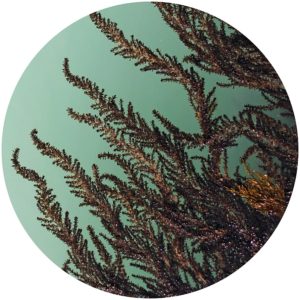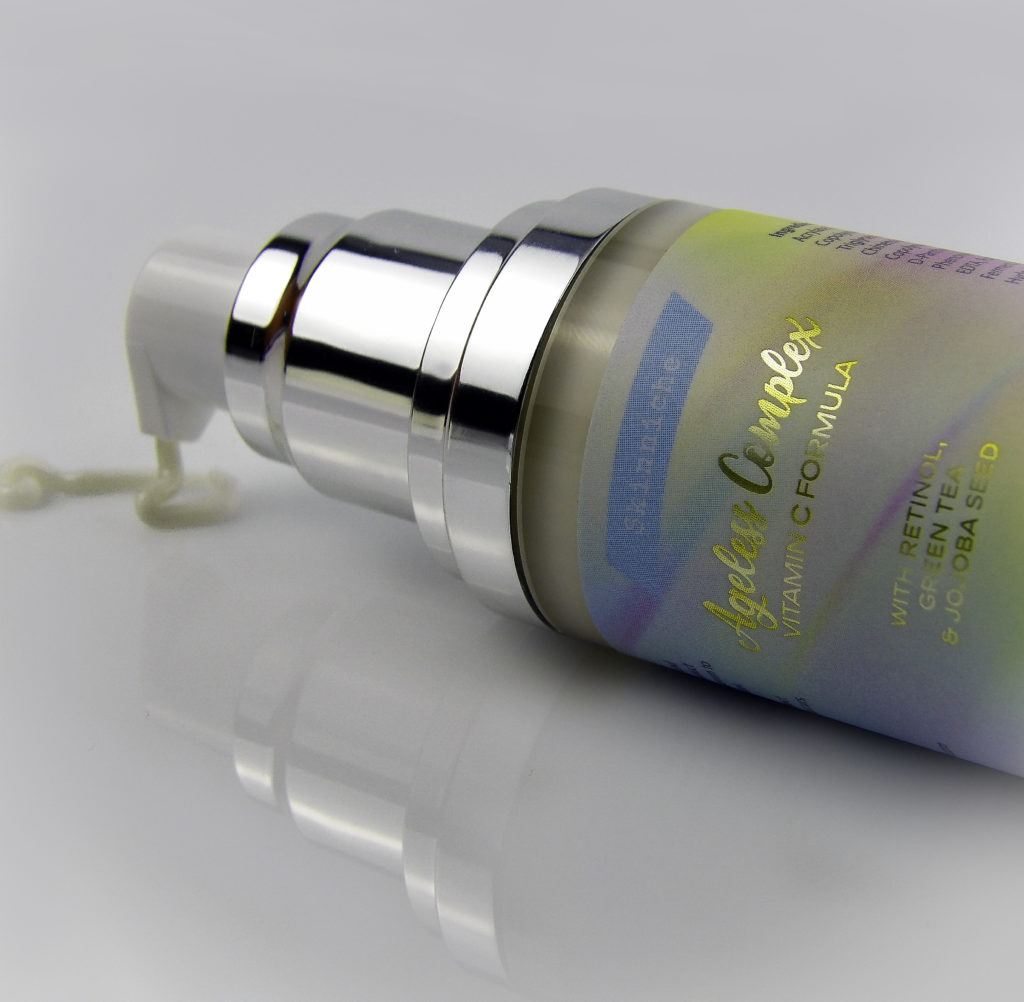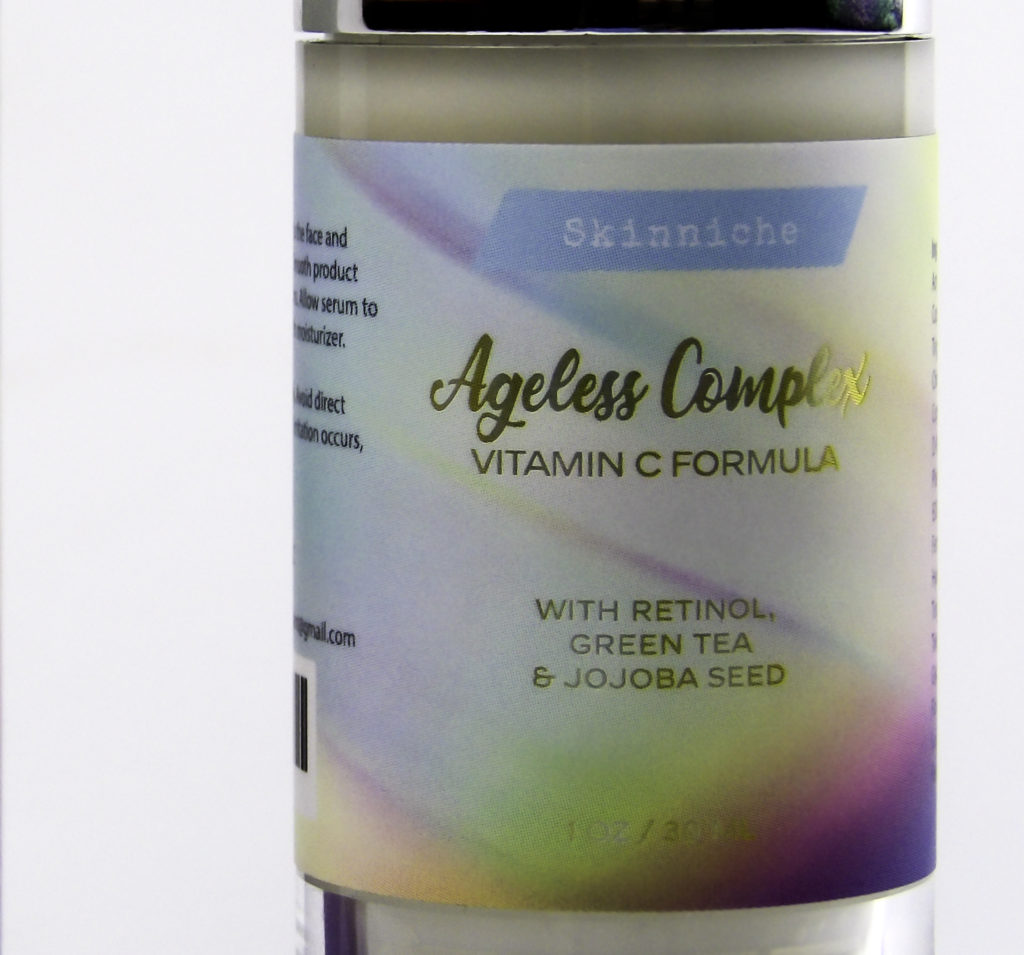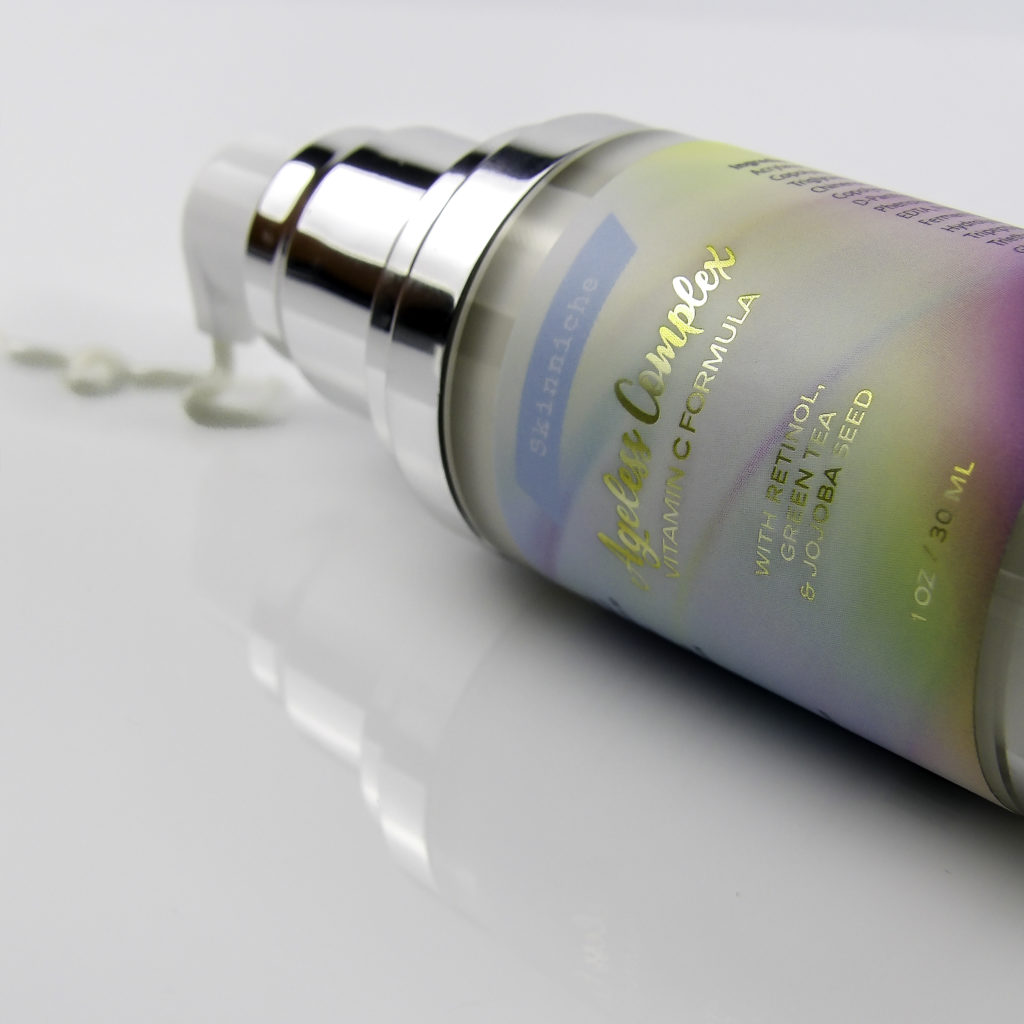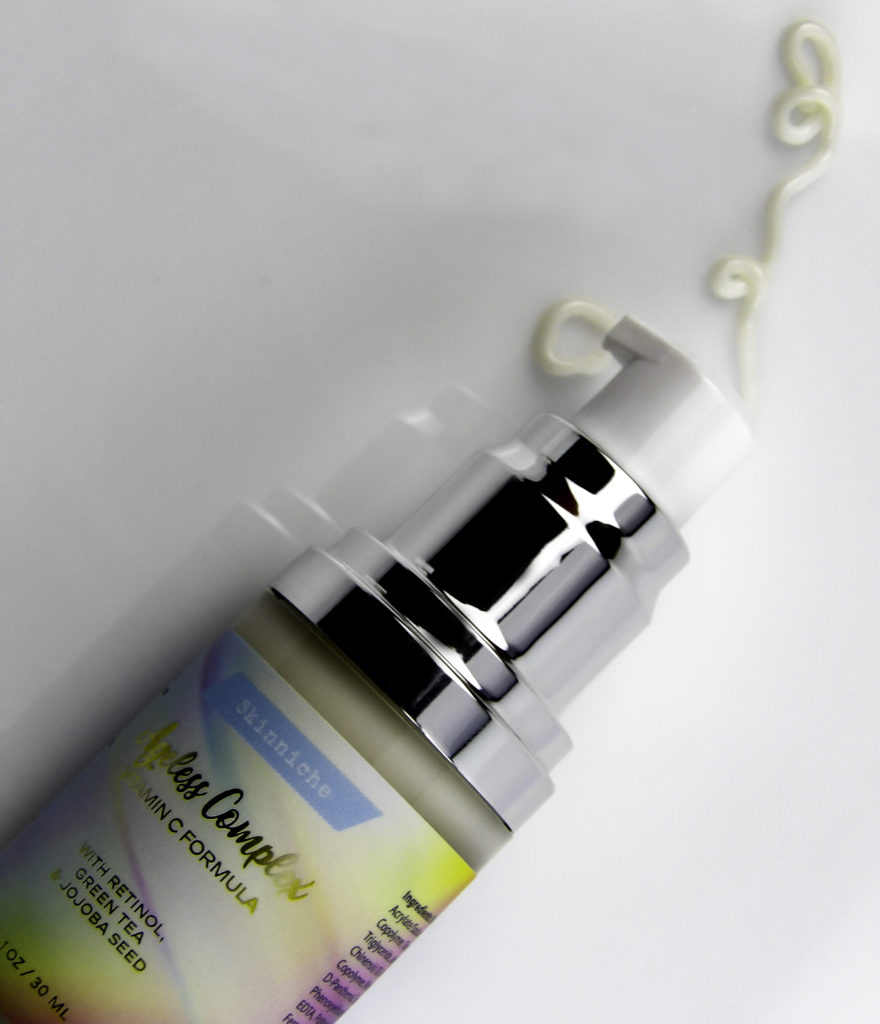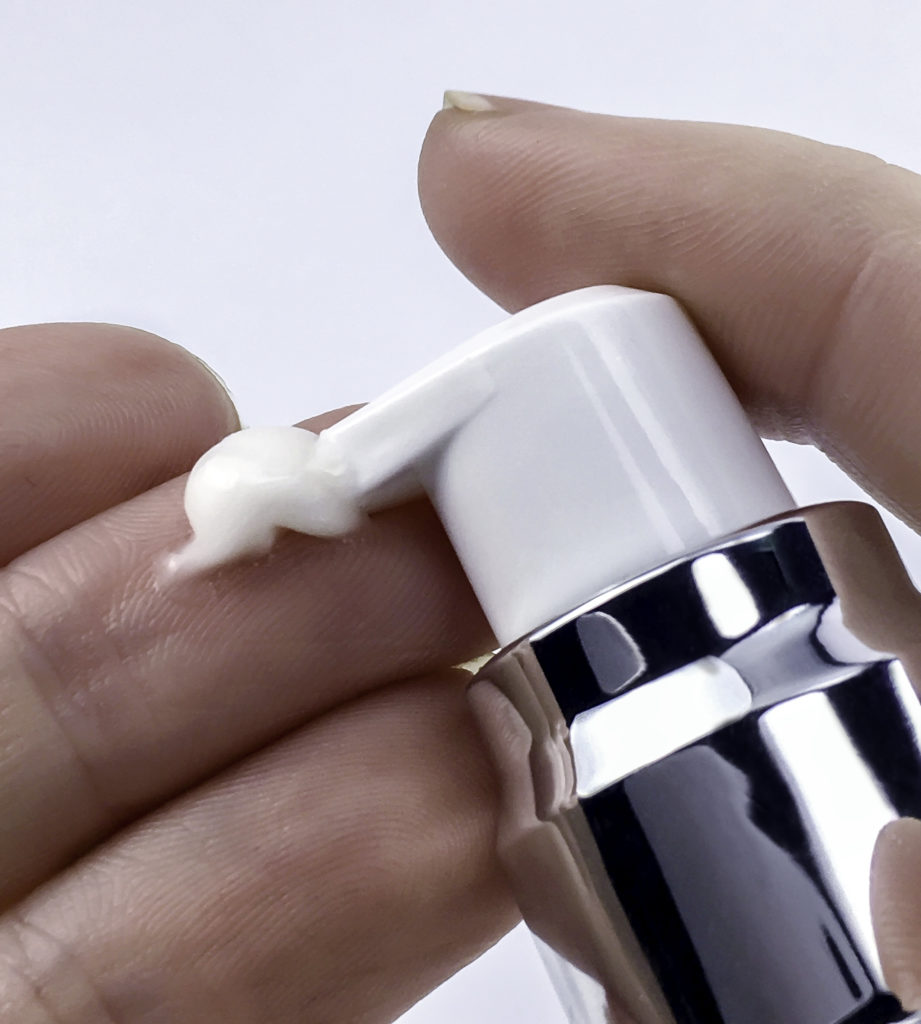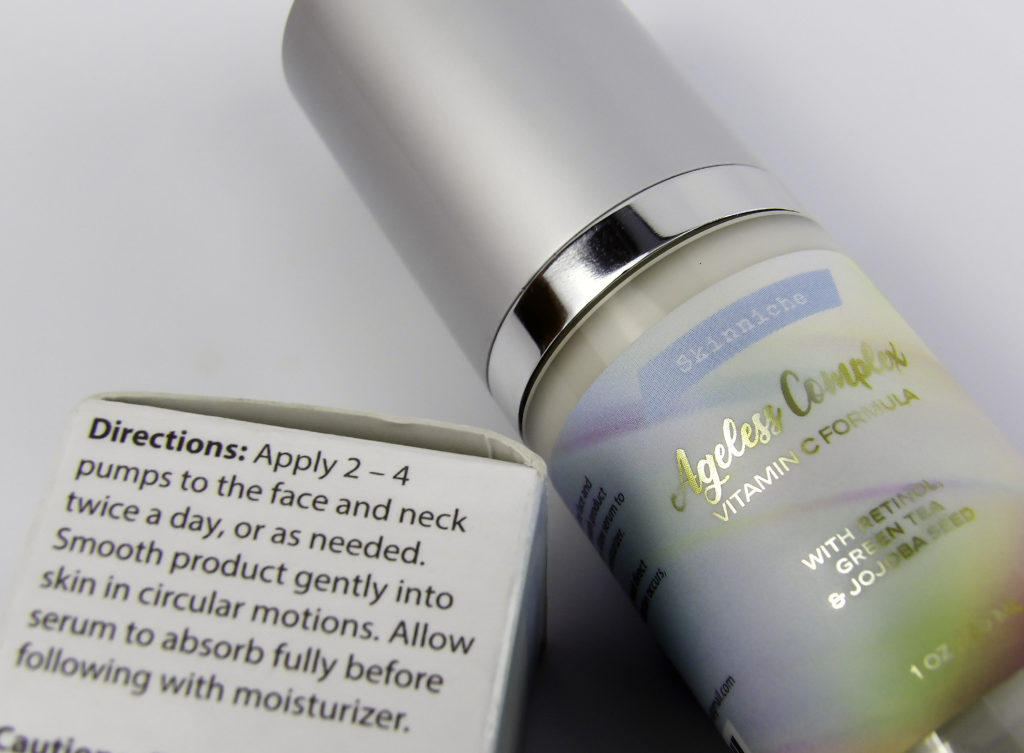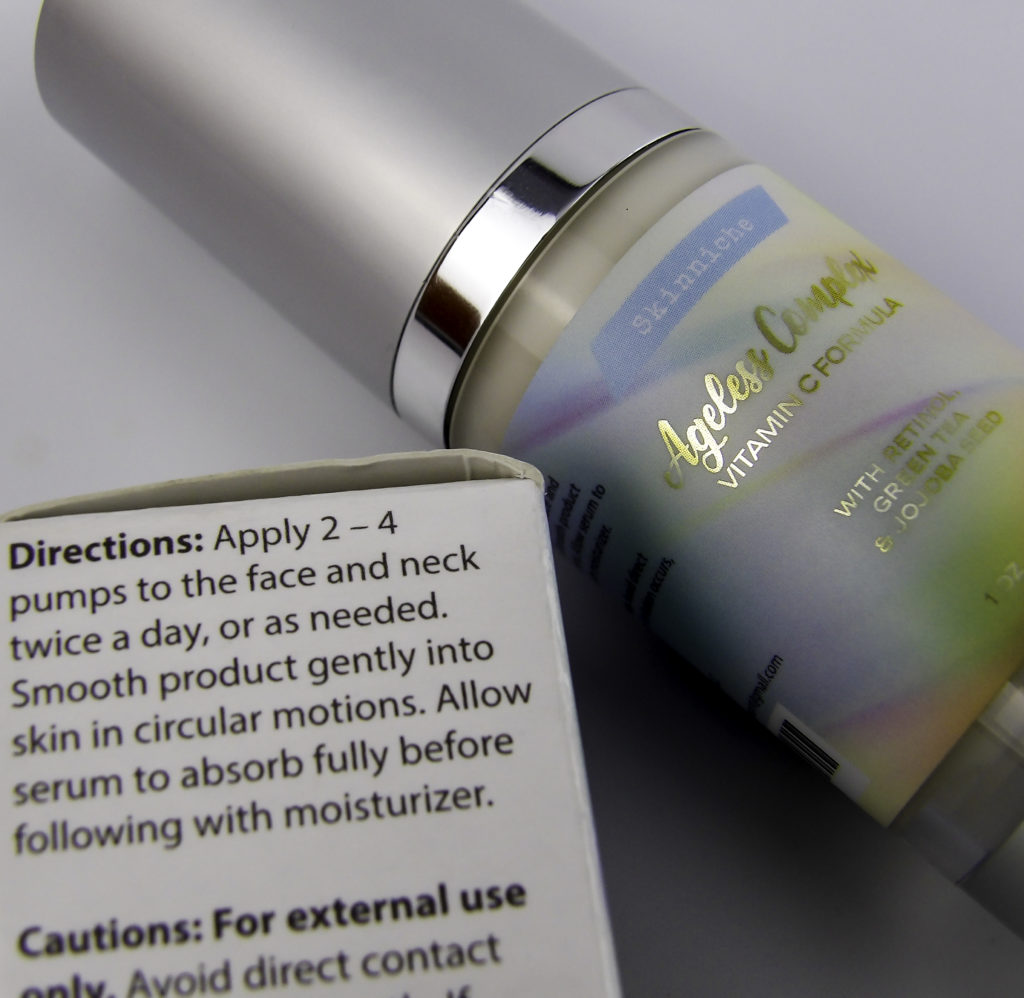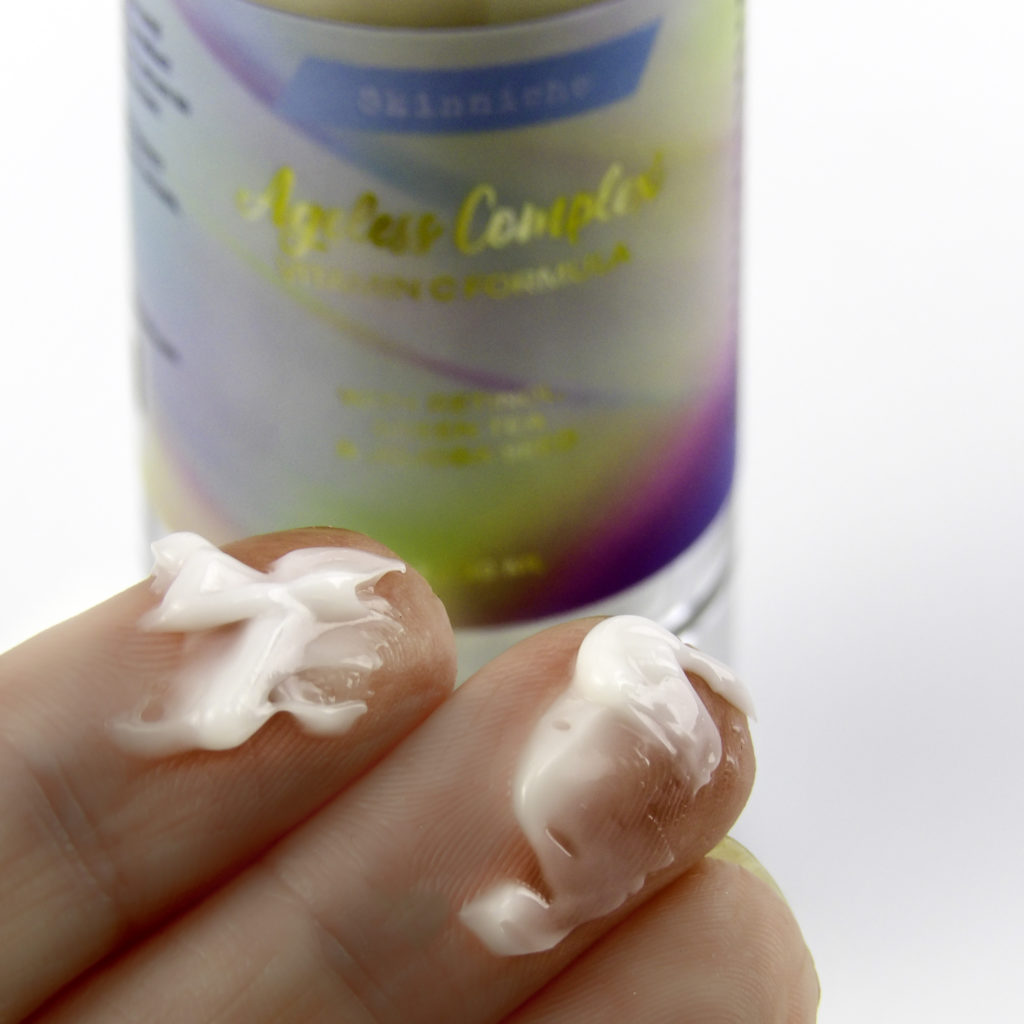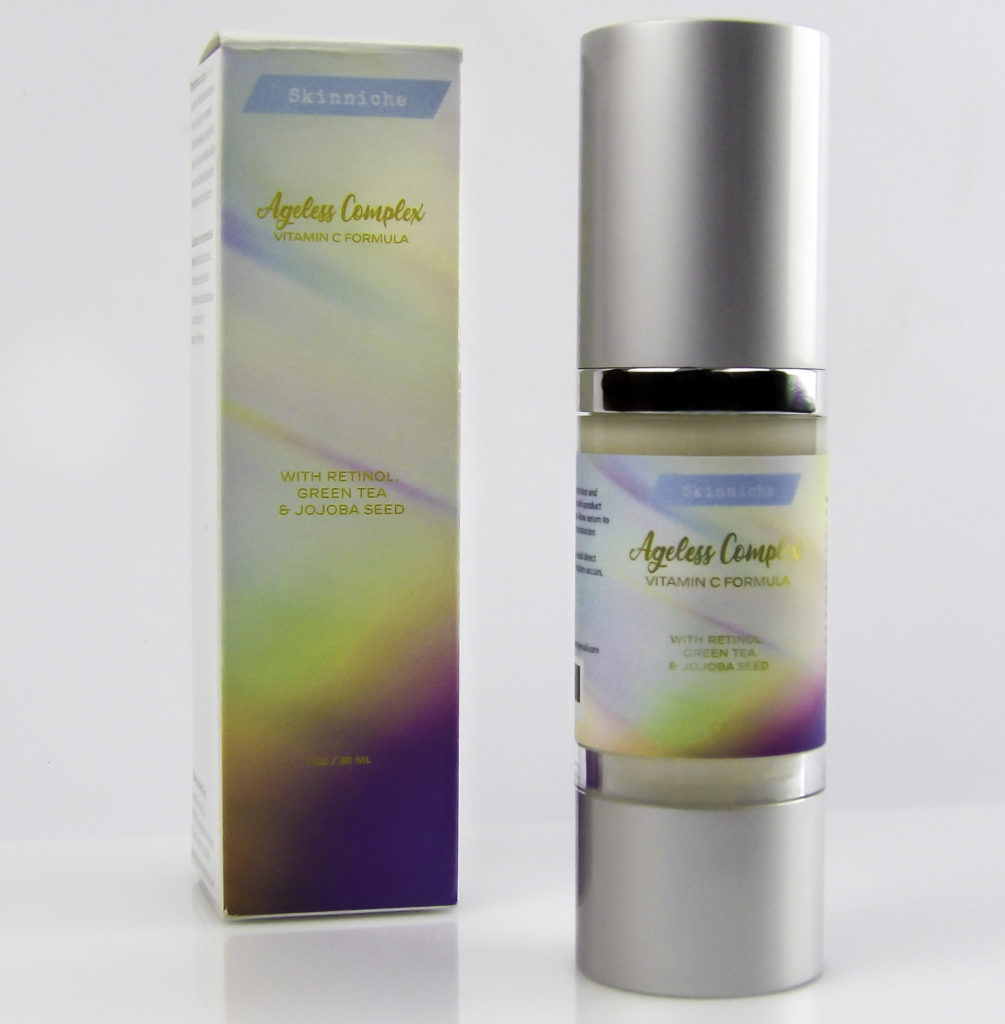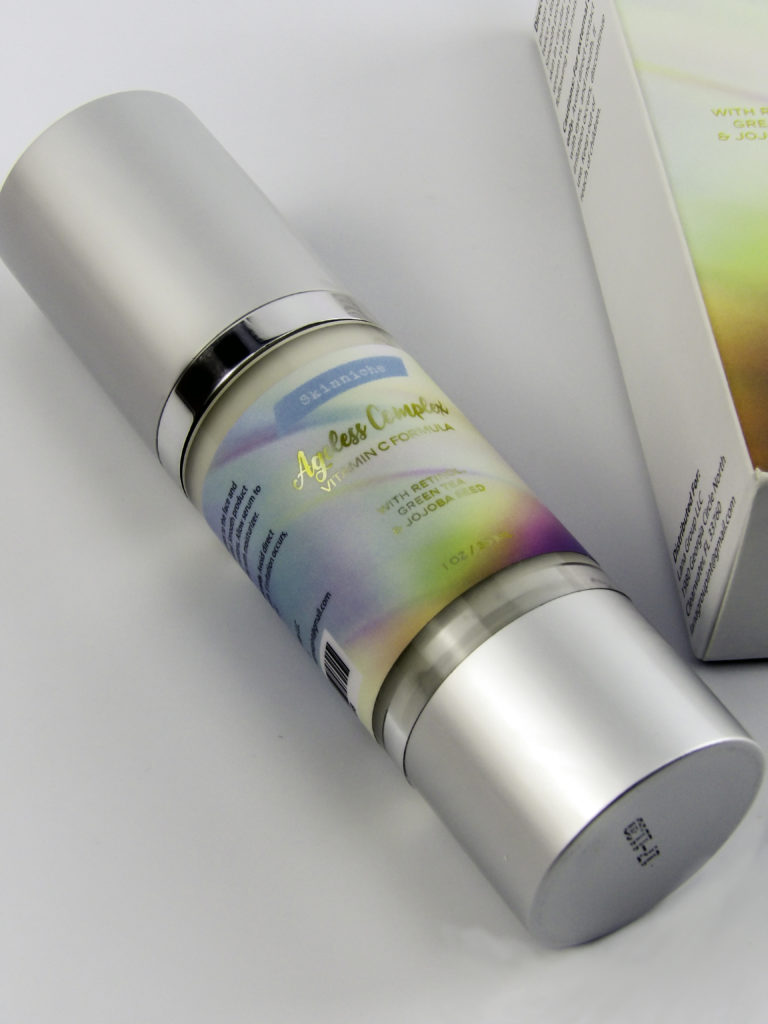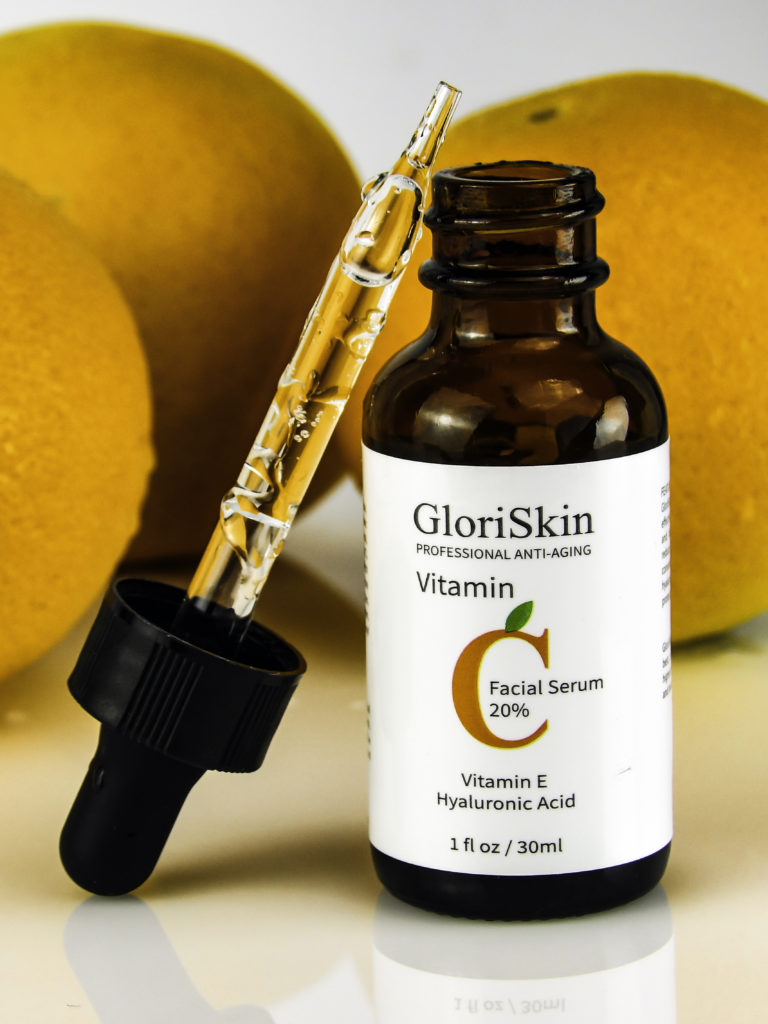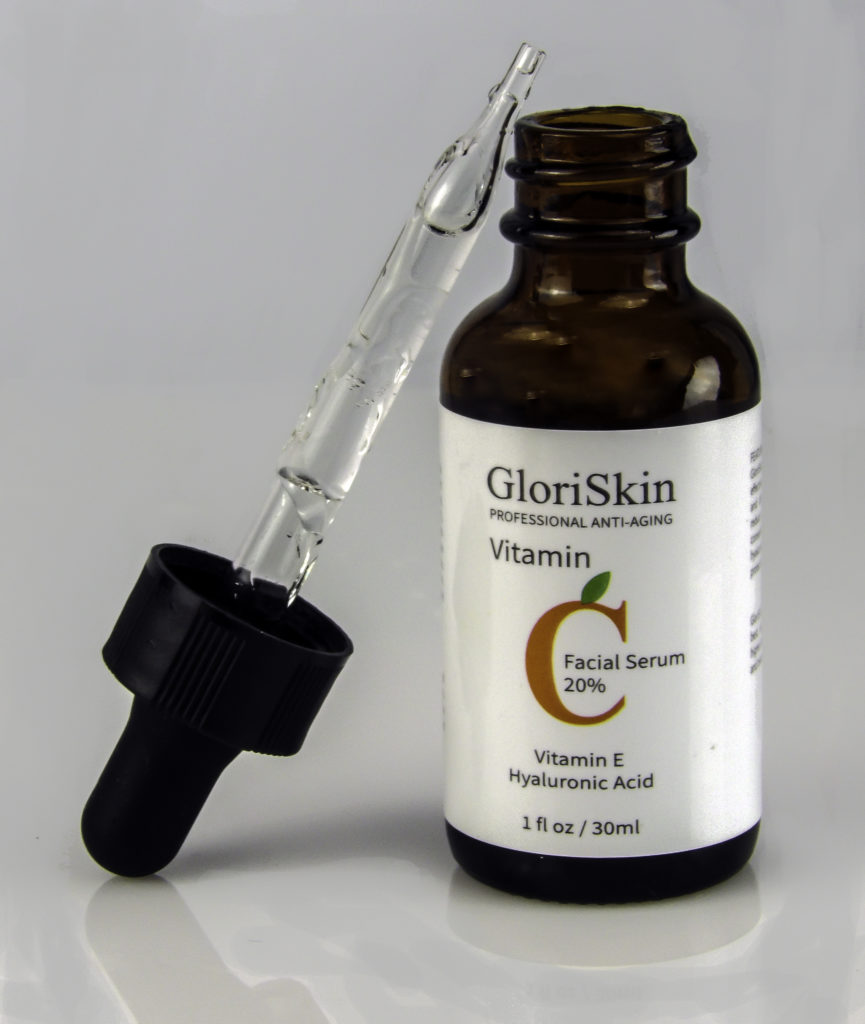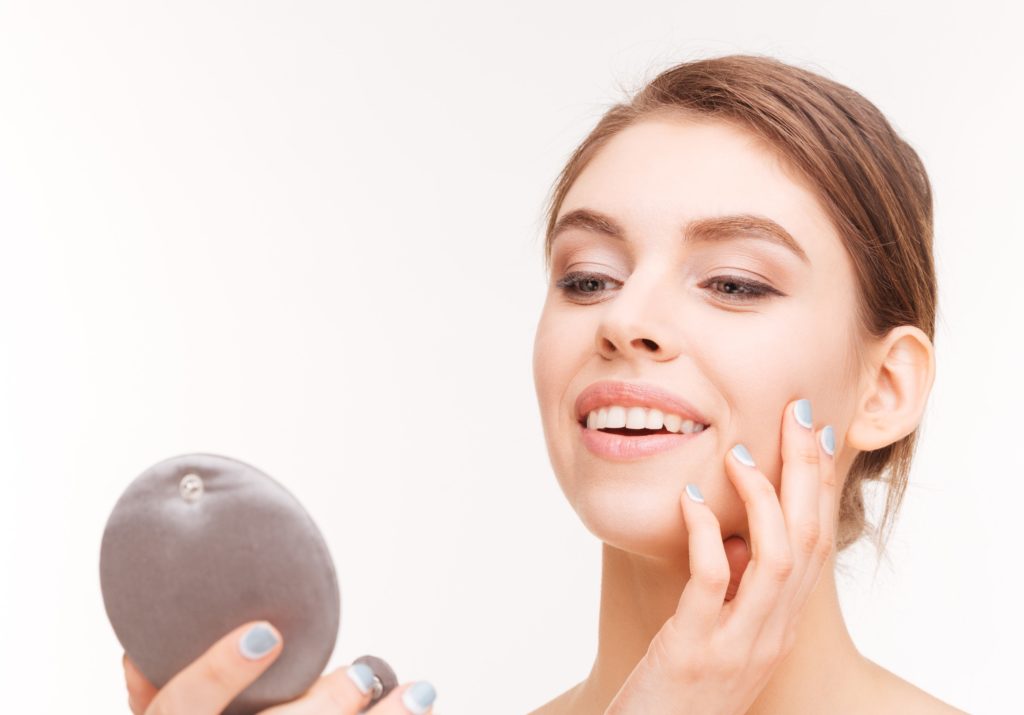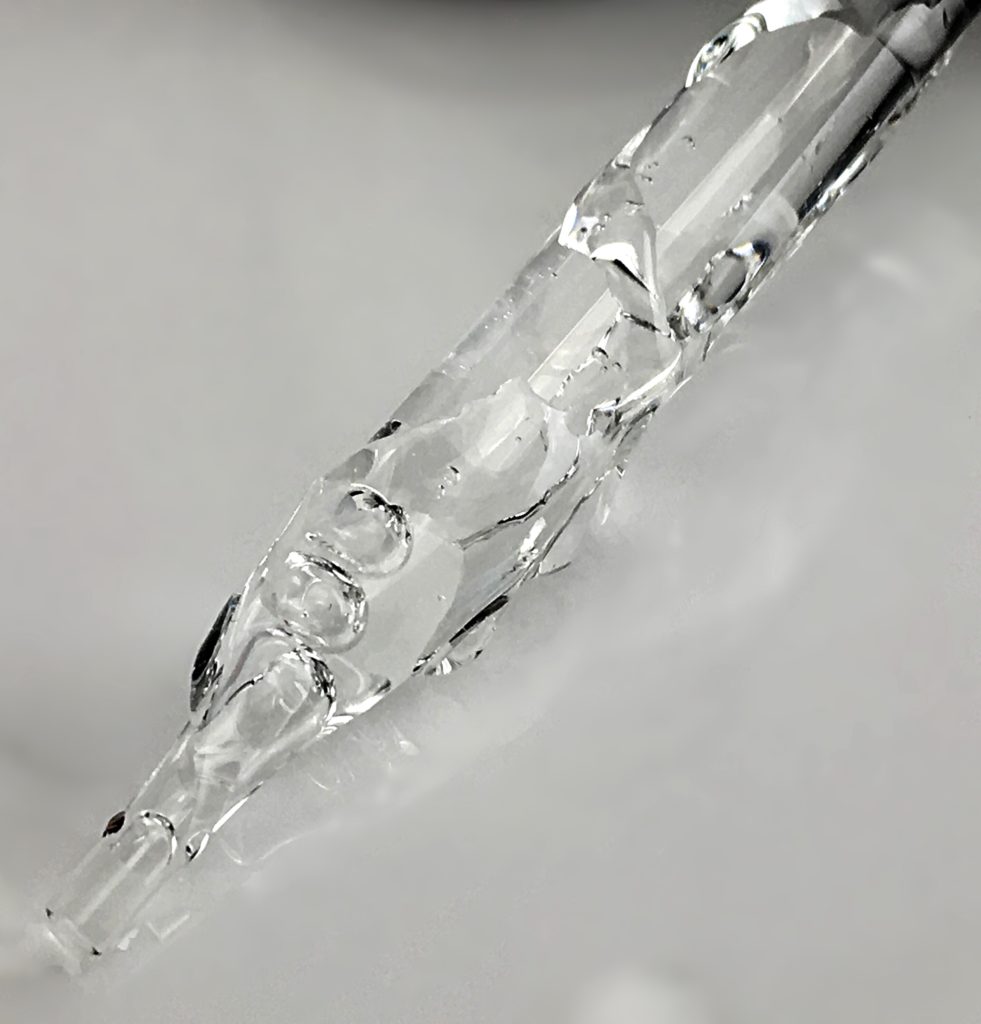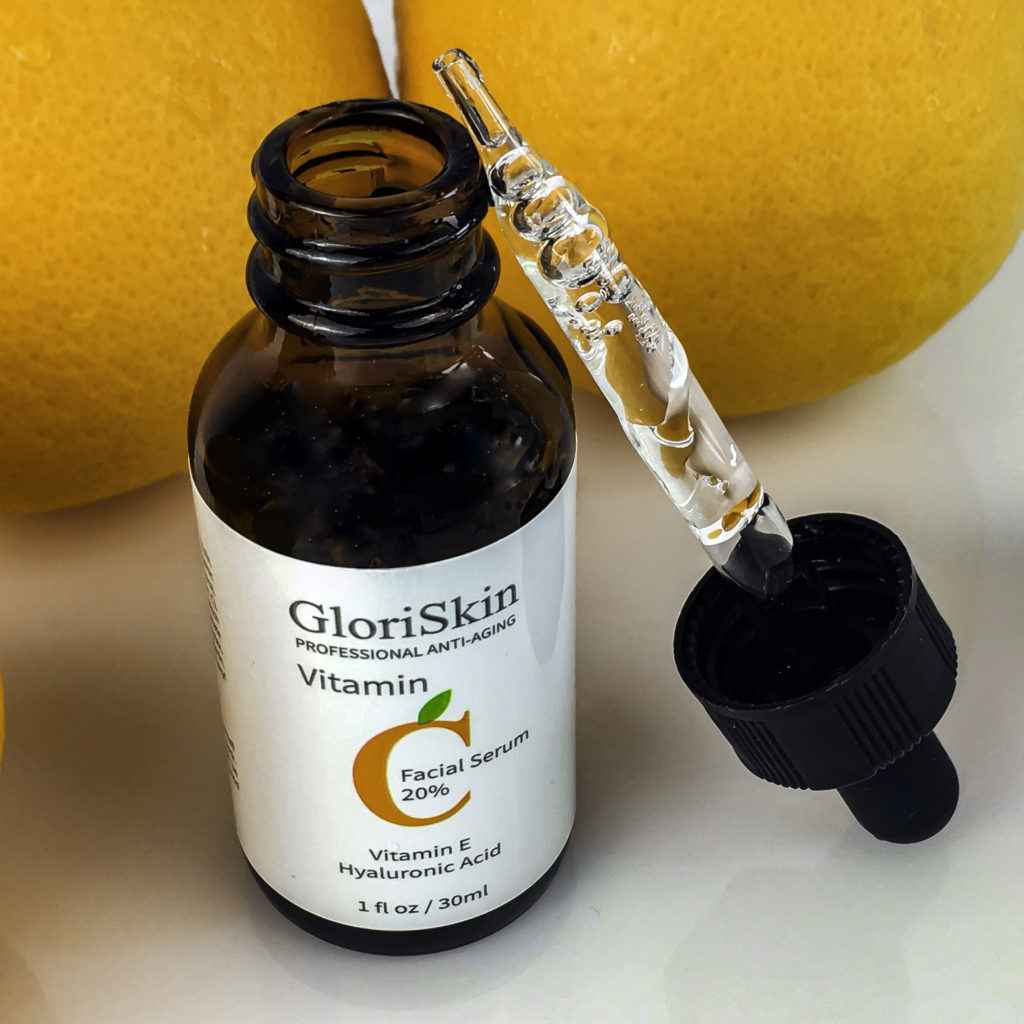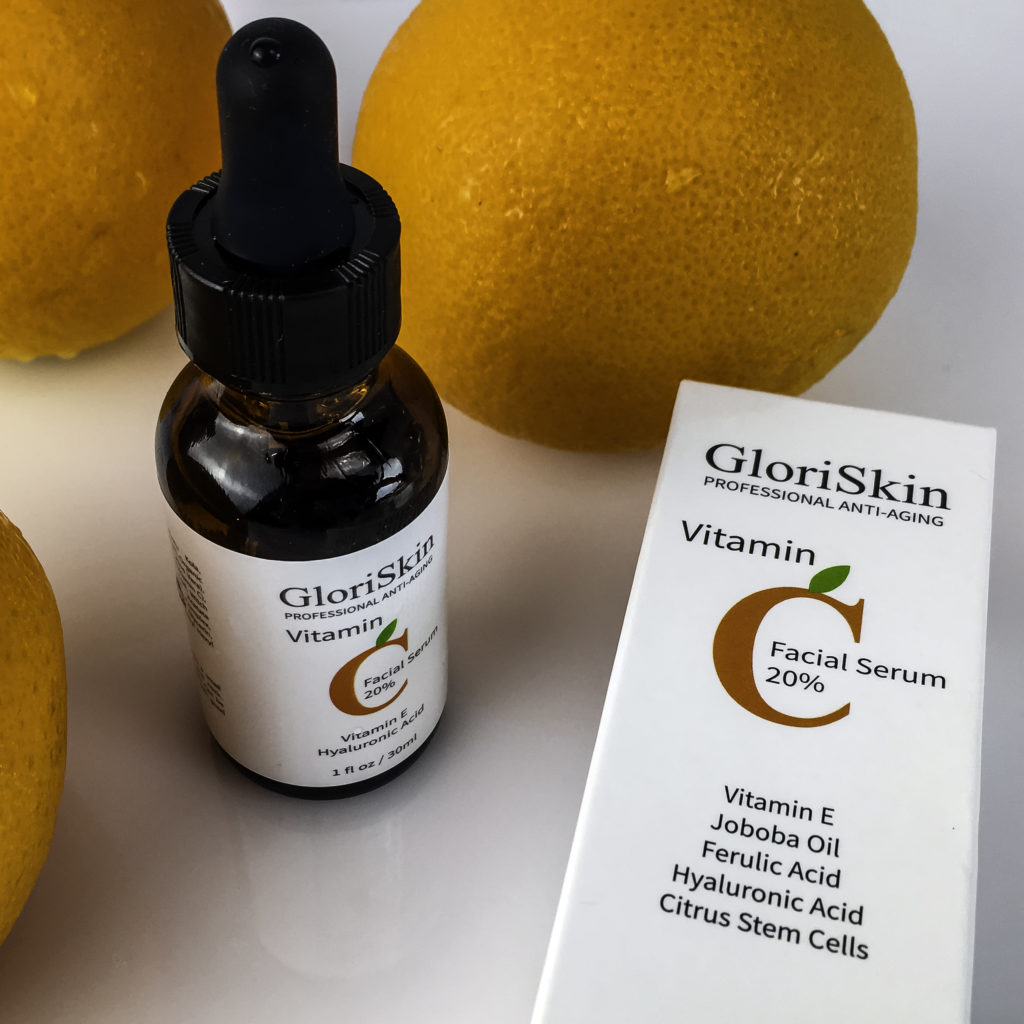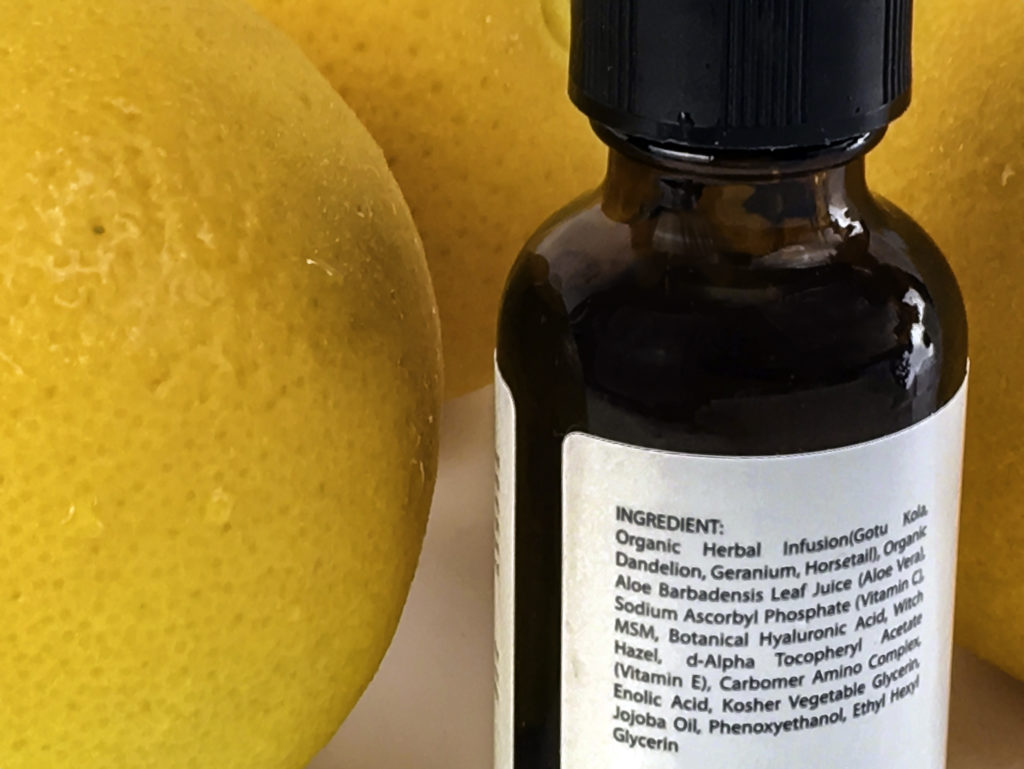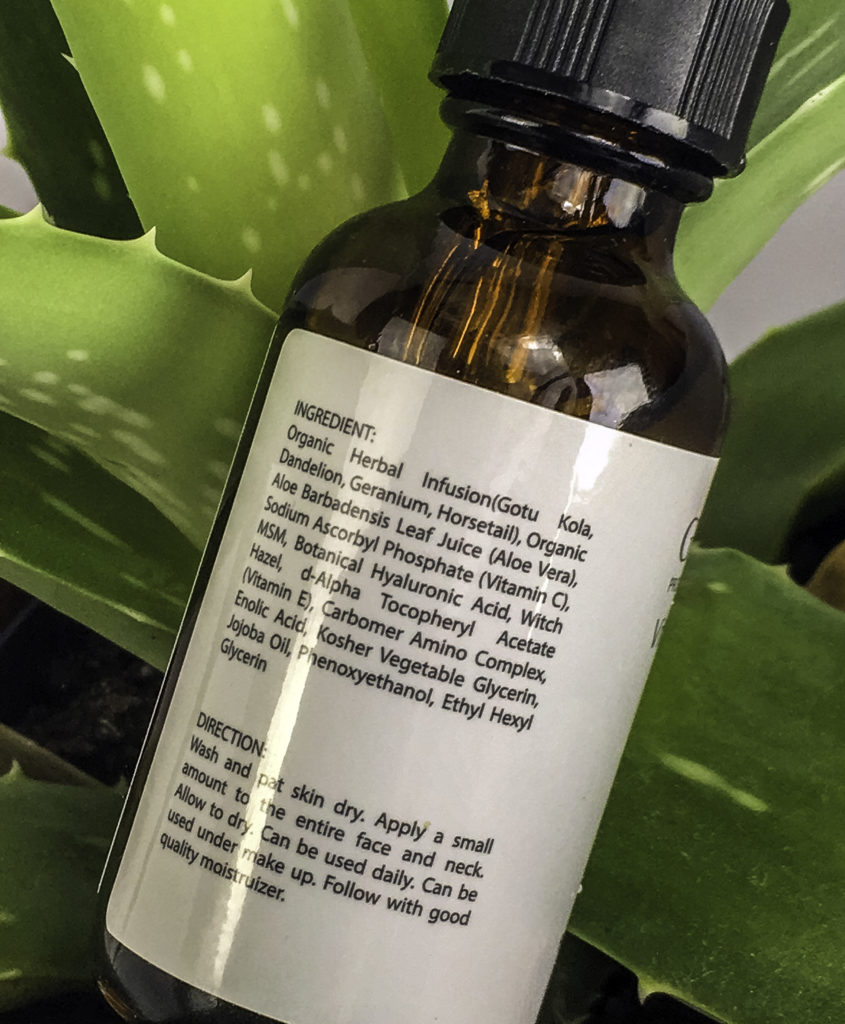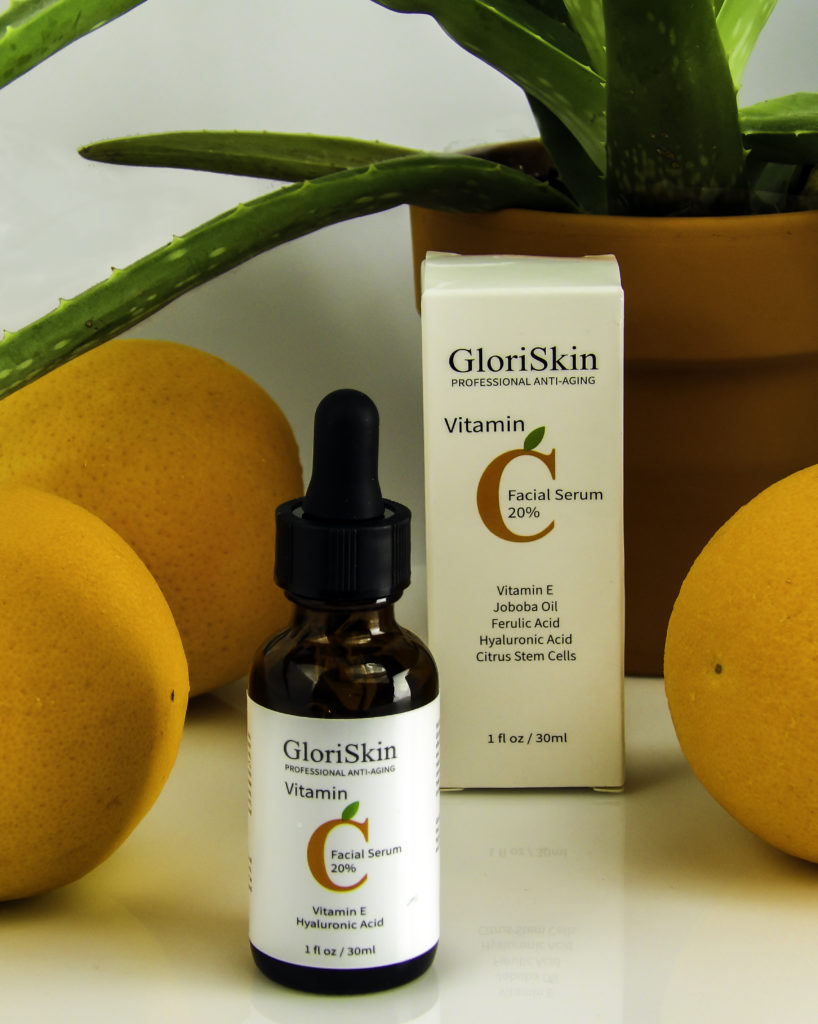Vitamin C and Retinol are the skincare holy grail because they benefit adult skin of any age. But sensitive skin types often cannot tolerate daily topical Vitamin C application. So we are excited to find Original Sleek Vitamin C Cream which is non-comedogenic, cruelty-free and contains natural moisturizing ingredients to support Vitamin C use, even on sensitive skin types.
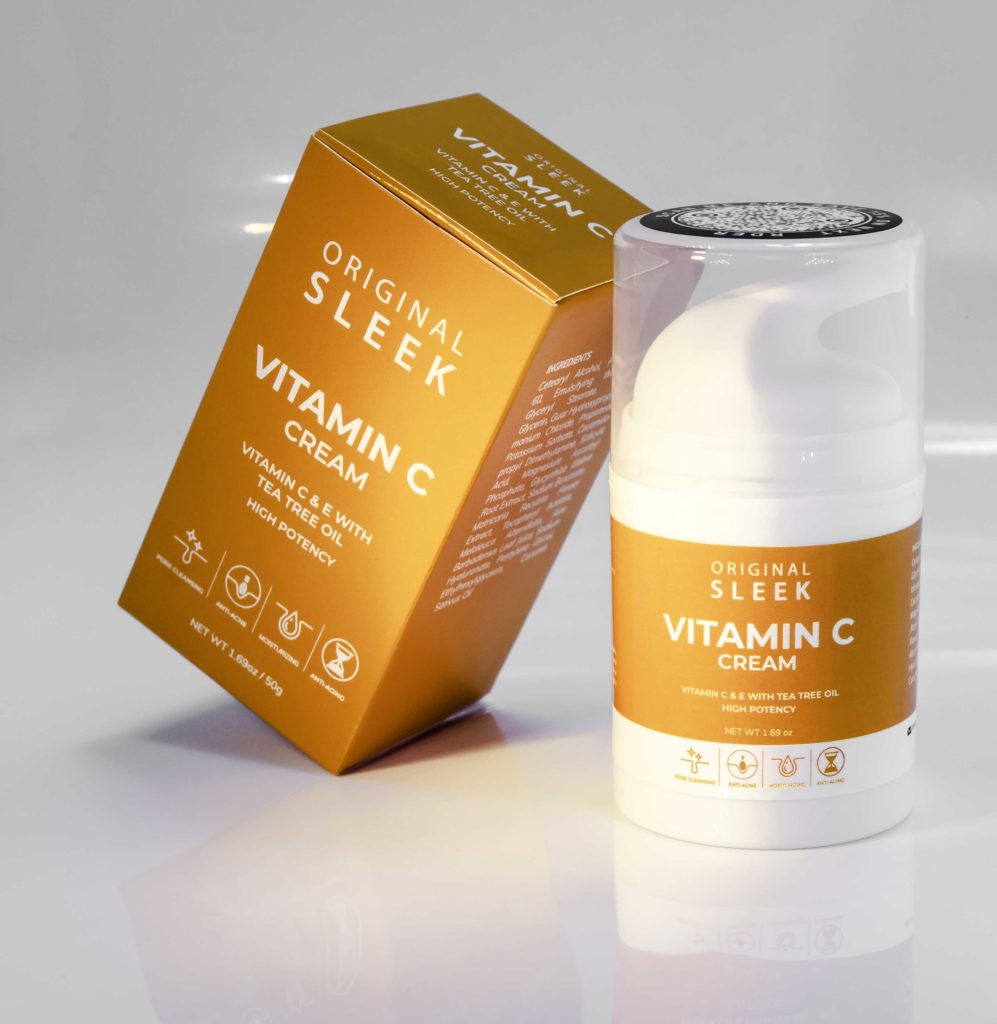
Original Sleek Vitamin C Cream contains powerful Vitamin C & natural ingredients for clear skin
What are the Skincare Benefits of Vitamin C?
What are the skincare benefits of Vitamin C?
Vitamin C is applied topically for targeted skin-rejuvenation. It is an anti-aging, acne reducing, and is a age spot, scar, and dark pigmentation fading powerhouse.
Vitamin C is an Anti-Aging
Vitamin C is a building block for collagen synthesis. Collagen is the support structure of the skin. Vitamin C reduces wrinkles and discoloration.
Vitamin C Counteracts Sun Damage
Sun damage is highly aging to the skin. It can cause a leathery skin texture even on younger skin.
Vitamin C also improves sun-damage such as hyper-pigmentation and rough skin texture.
Vitamin C Helps Acne
Vitamin C reduces inflammation on existing acne to reduce the lifestyle of a blemish. It also prevents future acne breakouts. And it fades old acne scars, even dark cystic marks.
Why Original Sleek is Special
Not every Vitamin C product works on sensitive skin. Original Sleek Vitamin C uses a water-soluble vitamin C derivative which is much gentler to skin but just as effective. Unlike direct Vitamin C forms, it converts into Vitamin C upon application. This means less skin irritation.
We like the Original Sleek Vitamin C formulation because:
- it is non-comedogenic
- it is cruelty-free
- no unwanted additives such as gluten, parabens, phthalates, SLS, SLES, and petroleum.
- it contains buffering ingredients to support regular Vitamin C use without irritation
- it has opaque packaging to keep ingredients fresh
- it contains ingredients which work together for fresher, brighter skin
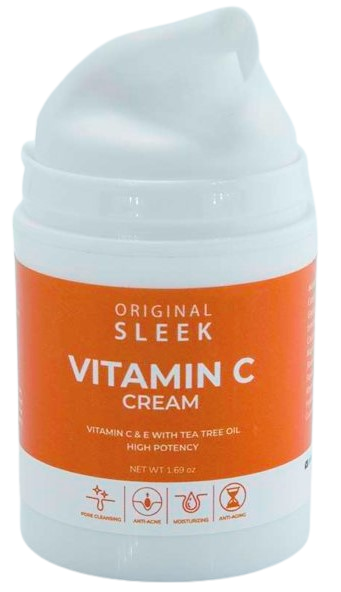
Original Sleek Vitamin C comes in opaque packaging with one pump dispenser
In addition to Vitamin C, Original Sleek Vitamin C Cream contains helpful supporting ingredients. Let’s take a look:
Key Ingredients
Magnesium Ascorbyl Phosphate
Magnesium Ascorbyl Phosphate is a Vitamin C for sensitive skin, it is a water-soluble Vitamin C derivative. It is particularly beneficial to revive dull skin. Magnesium Ascorbyl Phosphate is less exfoliating than other Cs but still produces collagen and suppresses melanin formation.[1]
Glycyrrhiza Glabra Root Extract
Licorice root contains glabridin, a potent antioxidant that soothes skin. It gently lightens dark circles and improves uneven tone. It is safe for even sensitive skin. [2]
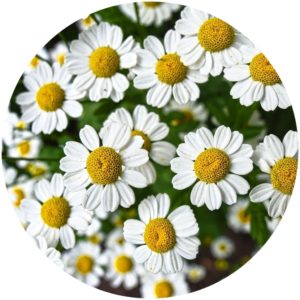
Chamomile
Matricaria Recutita Flower Extract
Matricaria Recutita Flower Extract is chamomile. Chamomile is an antioxidant with potent skin-soothing action. [3] It contains Terpenoids, bisabolol and chamazulene. Chamomile Extract is excellent in a formulation with powerful actives because its’ flavones inhibit skin inflammation. [4] The apigenin in Chamomile protects the skin barrier [5]. Chamomile Extract kills acne-causing bacteria without irritation. [6]
Salicylic Acid
Salicylic Acid is a natural bHA. Salicylic Acid purges clogged pores without excess drying the skin surface.
The lovely flowering Tea Tree, Melaleuca alternifolia
Melaleuca Alternifolia
Melaleuca Alternifolia is better known as tea tree oil. Melaleuca oil contains terpinen-4-ol, which is an amazing antibacterial and antifungal.[7,8]
It is also a moisturizing toner, cleanser and astringent. It effectively treats acne and prevents future breakouts [9]. It is not drying like other acne-treating ingredients, so it is effective on sensitive skin and adult acne. It even treats cystic acne.[10]
Tocopheryl Acetate
Tocopheryl Acetate is Vitamin E, an excellent skin softener.
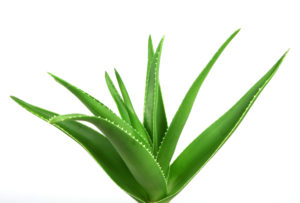
Aloe Vera
Aloe Leaf Juice
Aloe Vera Juice comes from the Aloe Vera plant. Aloe Vera nourishes skin with Vitamins A, C, Bs, and E as well as minerals and enzymes. It heals, hydrates, and accelerates skin cell growth. It provides anti-inflammatory and anti-bacterial properties.
Sodium Hyaluronate
Sodium Hyaluronate is a form of Hyaluronic Acid. It is a humectant that offers stronger moisture retention properties than regular HA. It is found naturally and ample supply in young skin, but depletes with age.
Sodium Hyaluronate has a lower molecular size than other Hyaluronic Acids. It absorbs deeper into the skin and brings other actives along with it.
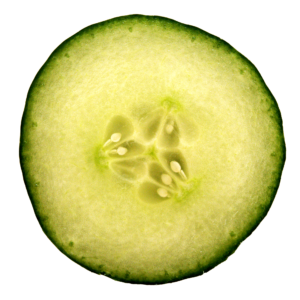
Cucumber
Cucumis Sativus Oil
Cucumis Sativus Oil is cucumber oil contains Omega-9 and Omega-6 to treat dry, irritated or sunburned skin. Cucumber oil is soothing and reduces swelling. Cucumber contains skin-friendly vitamin A, C and K, magnesium, potassium, and manganese.
Cetearyl Alcohol
Cetearyl Alcohol is fatty alcohol or good alcohol because it holds water, non-drying.
Glycerin
Glycerin attracts and retains moisture and oxygen in the skin.
The Experience
We like the one-pump dispenser design to keep the product fresh.
- Scent: Slight orange creamsicle, not overpowering, I can’t smell it once applied.
- Color: pale butter yellow with light orange swirl
- Consistency: It is a lightweight texture
- Dry-down: non-oily, absorbs well. Slight tacky finish until it dries. No chalky residue. Light oil finish, not greasy.
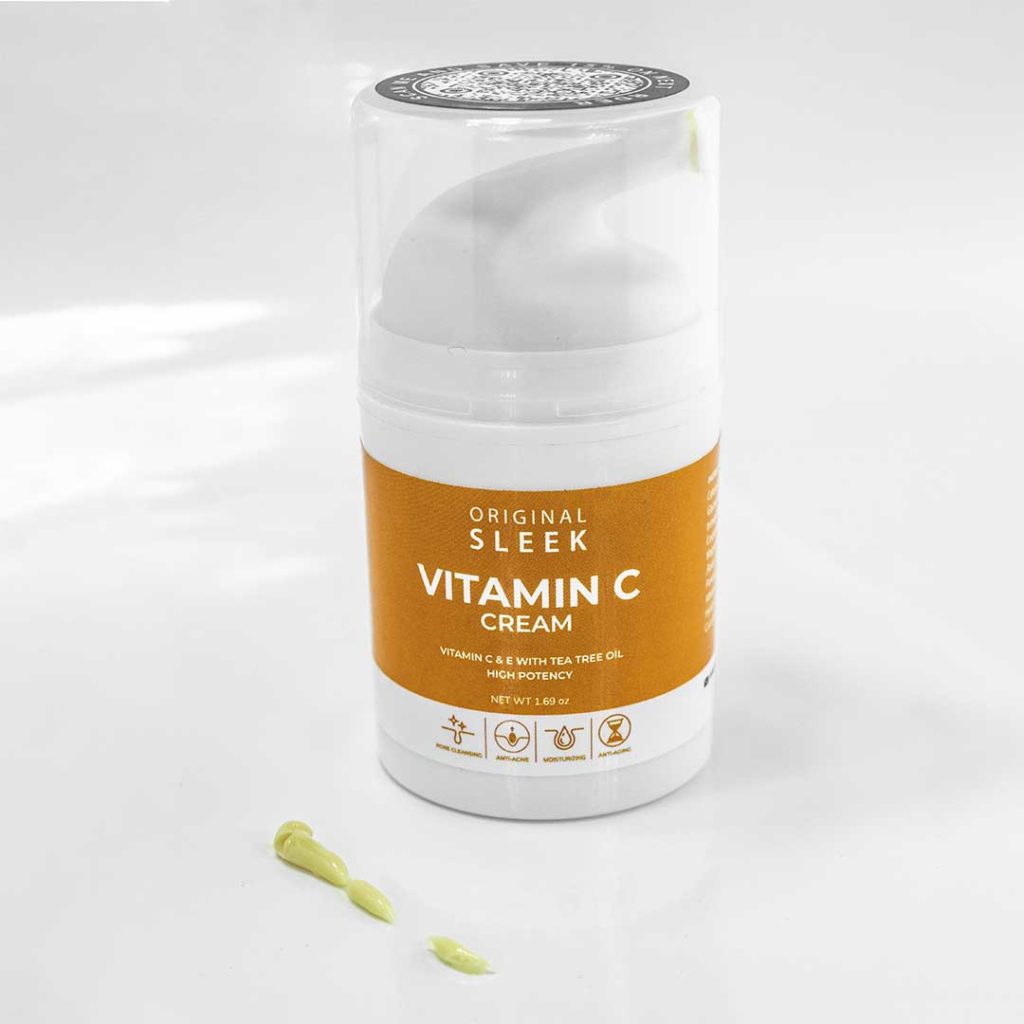
Original Sleek Vitamin C Cream is a buttery yellow hue with a creamy texture
With regular use, my skin is well-hydrated and not dry, flaking or irritated as can happen with some Vitamin C creams or serums. There is no weird white residue left on my skin. There is no itchy tight feeling.
Where to Buy It
Find Original Sleek Vitamin C Cream at http://www.amazon.com/dp/B0BJZ3LWQF?ref=myi_title_dp
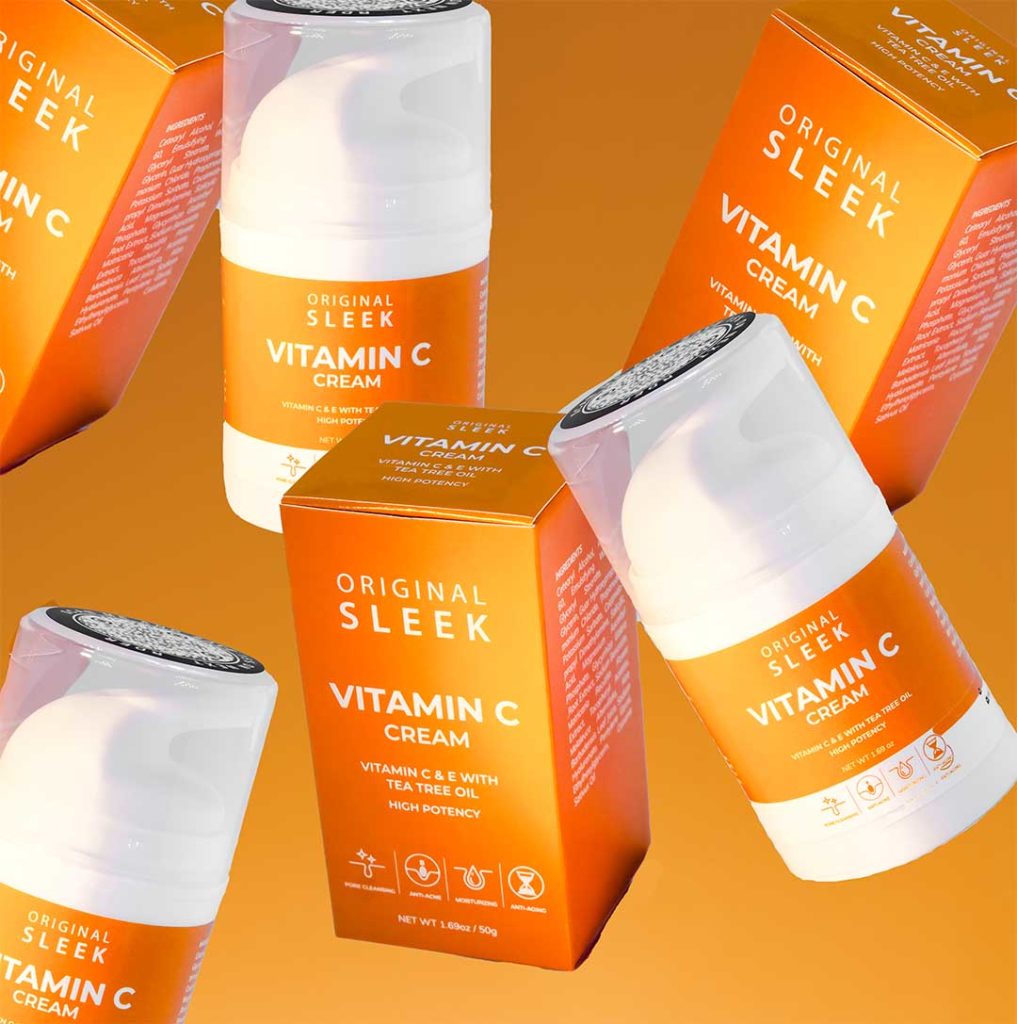
Original Sleek Vitamin C Cream
Questions & Comments
Got questions about Original Sleek Vitamin C Cream?
The Style Chicks are here to answer them
Email us or ask us in the comments below.
References
- Journal of Cosmetic Dermatology, Volume 11 (4) Dec 1, 2012, Stability, transdermal penetration, and cutaneous effects of ascorbic acid and its derivatives
- Journal of Clinical and Aesthetic Dermatology, January 2009, pages 404
- Merfort I, Heilmann J, Hagedorn-Leweke U, Lippold BC. In vivo skin penetration studies of chamomile flavones. Pharmazie. 1994;49(7):509-511.
- Hou M, Sun R, Hupe M, et al. Topical apigenin improves epidermal permeability barrier homoeostasis in normal murine skin by divergent mechanisms. Exp Dermatol. 2013;22(3):210-215. doi:10.1111/exd.12102
- Journal of Clinical and Aesthetic Dermatology, January 2009, pages 404
- Srivastava, Janmejai K, and Sanjay Gupta. “Extraction, Characterization, Stability and Biological Activity of Flavonoids Isolated from Chamomile Flowers.” Molecular and cellular pharmacology vol. 1,3 (2009): 138. doi:10.4255/mcpharmacol.09.18
- Carson CF, Hammer KA, Riley TV. Melaleuca alternifolia (Tea Tree) oil: a review of antimicrobial and other medicinal properties. Clin Microbiol Rev. 2006 Jan;19(1):50-62. doi: 10.1128/CMR.19.1.50-62.2006. PMID: 16418522; PMCID: PMC1360273.
- Li WR, Li HL, Shi QS, Sun TL, Xie XB, Song B, Huang XM. The dynamics and mechanism of the antimicrobial activity of tea tree oil against bacteria and fungi. Appl Microbiol Biotechnol. 2016 Oct;100(20):8865-75. doi: 10.1007/s00253-016-7692-4. Epub 2016 Jul 7. Erratum in: Appl Microbiol Biotechnol. 2017 Mar;101(5):2201. PMID: 27388769.
- Bassett IB, Pannowitz DL, Barnetson RS. A comparative study of tea-tree oil versus benzoylperoxide in the treatment of acne. Med J Aust. 1990 Oct 15;153(8):455-8. PMID: 2145499.
- Wallengren J. Tea tree oil attenuates experimental contact dermatitis. Arch Dermatol Res. 2011 Jul;303(5):333-8. doi: 10.1007/s00403-010-1083-y. Epub 2010 Sep 24. PMID: 20865268.
About This Post

